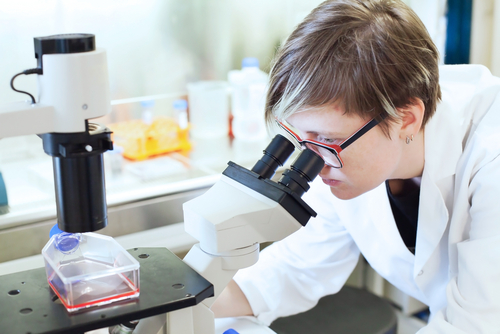Researchers in New Zealand recently detailed a “unique” case study of a B-cell ALL (acute lymphoblastic leukemia) patient with late relapse to the nasal septum as a sinonasal lymphoblastic lymphoma, and with genetic support for the septum as a “newly described” sanctuary site.
Sinonasal lymphoma, a rare form of non-Hodgkin’s lymphoma (NHL) involving the nasal cavity and/or paranasal sinuses, represents 1.5% of all lymphomas. The case study, titled “Sinonasal Lymphoma Presenting as a Probable Sanctuary Site for Relapsed B Acute Lymphoblastic Leukaemia: A Case Report and Review of the Literature,” was published in the journal Case Reports in Hematology by researchers from the Dunedin School of Medicine, University of Otago, and colleagues.
Clinical symptoms of sinonasal lymphoma can vary but are usually similar to those of benign inflammatory diseases. They include nasal obstruction, rhinorrhea, bloody discharge/epistaxis, post nasal drip, facial swelling, neck mass, and weight loss. In terms of pathology, the disease can be represented by various cytological types but the most common forms to arise in the sinonasal area are thought to be DLBCL (diffuse large cell B-cell lymphoma), followed by nasal NK/T-cell lymphoma.
The authors presented the case of a 44-year-old Caucasian woman, treated six years earlier for B-cell ALL, who was hospitalized with nasal obstruction lasting for three months as well as yellow nasal discharge and forehead pain. The patient was treated for allergic rhinitis, however, the symptoms persisted. Examination revealed a mass involving the nasal septum and the lower part of the nasal cavity, extending into the nasopharynx. Histology showed a monomorphic infiltrate of immature cells positive for several markers (CD19, PAX-5, HLADR, CD34, Tdt, and CD56), findings consistent with a diagnosis of B-cell ALL.
The patient was treated with an induction phase of chemotherapy that was poorly tolerated; hence intensification, consolidation, and maintenance chemotherapy were not planned. A second allogeneic stem cell transplant was also not planned due to insufficient evidence supporting this treatment after GvHD, especially given the 100% donor chimerism in the blood and bone marrow. Graft-versus-host disease (GvHD) is a common complication following an allogeneic tissue transplant.
The sinonasal space was considered a sanctuary site which shielded the leukemic cells from graft-versus-leukemia effect; this was supported by the tumor showing female heritage and cytology consistent with her initial disease.
According to the authors, “this is an unusual site for B-ALL relapse and the female lineage of the tumor cells strongly supports the contention that the nasal septum represents a newly described sanctuary site for lymphoma.”
“Disease relapse is frequently diagnosed late, further worsening an already grave prognosis of the disease. Early diagnosis improves clinical outcome, highlighting the need for an awareness that patients presenting with sinonasal symptoms refractory to initial medical treatment are at risk of relapse,” the authors concluded.


